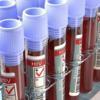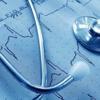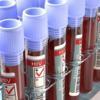Holistic Treatments for HIV

An Overview of HIV
The human immunodeficiency virus or HIV can be spread through infected body fluids such as blood, vaginal fluid, rectal fluids, semen and pre-ejaculatory fluids, and breast milk. Most often, the virus is passed through sexual intercourse or sharing of infected injection needles with a person who is HIV-positive.
The HIV virus easily spreads through body fluids and attacks particularly the CD4 cells (also commonly known as the T cells) of the body’s immune system. The virus gradually destroys the cells, making the body more susceptible to developing infections and other diseases. If the HIV infection is left untreated, it can progress to the advanced stage of the infection called the acquired immunodeficiency syndrome or AIDS. In this stage, your immune system is significantly impaired and your T cell count becomes lesser than 200 cells/mm3. If you have reached this stage, you will have a difficulty in combating mild infections and diseases that can be easily resolved in healthy people. Moreover, some of these infections can lead to fatal complications.
Most people who have acquired the HIV virus undergo an antiretroviral therapy (ART) to manage their condition. However, such medications only slow down the rate of multiplication of the HIV virus in one’s system, and do not completely get rid of the virus. Aside from not offering a cure, antiretroviral therapies are known to cause a number of side effects. For this reason, approximately 70 percent of people with HIV have tried other types of treatments such as alternative and complementary medicine as well as holistic approaches.
What is a holistic treatment?
A holistic approach is a type of treatment that involves an individual’s whole being to improve one’s health and overall wellness. It is a form of healing that involves a person’s body, spirit, mind, and emotions. According to its philosophy, an individual can achieve optimal health by maintaining a balanced life. It is a type of treatment that targets towards reducing the effects of symptoms of HIV and at the same time healing short-term and long-term effects of the virus. It also helps to seal and heal the gaps created by the infection.
In holistic medicine, a person is regarded as having many interdependent parts that work together to function better as a whole. If one part is defective and not properly functioning, the rest of the other parts of the body will be affected. For this reason, when people have physical, spiritual, mental, and emotional imbalances, their overall health can also be significantly affected.
Benefits of Holistic Treatments
Up to 80 percent of people living with HIV have taken up holistic treatment therapies for the following benefits:
- reduces the effects of HIV symptoms
- relieves side effects
- strengthening of the body
- immune system repair and strengthening
Types of Holistic Treatment
1. Herbal antimicrobial therapy
This type of antimicrobial therapy is used to fight infections that are related to HIV and other infections in the body of a person infected with the virus. An antimicrobial refers to a chemical agent that is used to kill harmful microorganisms such as parasites, bacteria, viruses, and fungi. A person with HIV is likely to experience infections brought about by these pathogenic microorganisms. Herbal antimicrobial therapies can help heal such infections. Antimicrobial chemicals are contained in a number of plants, which include propolis, garlic, tea tree, neem, goldenseal, and sanguinaria (bloodroot).
2. Medical marijuana
Studies have shown that the use of medical marijuana in HIV-positive patients can help them cope with the side effects from antiretroviral drugs. People who are HIV-positive may easily lose their appetite as a side effect of the antiretroviral drugs they are taking. Sometimes, the medications may even cause adverse side effects in the stomach. This is where medical marijuana comes in since taking it tends to help them manage their condition better. It also reduces other symptoms such as pain, nausea, depression, and anxiety.
It was also found that the levels of chronic neuropathic pain caused by the HIV infection are significantly reduced by regularly consuming cannabis. It also helps combat the breakdown of muscles and weight loss.
3. Acupuncture
This is a rather traditional method of alternative treatment but has been used for a long time as an effective way of restoring and maintaining the overall health of a patient. It is also used to stimulate certain parts of the body. Treatment is done by inserting thin metallic needles in the skin and manipulating them by the use of hands or electrical means. It is also believed that acupuncture can improve a person’s blood flow and boosts the body’s natural painkillers. Aside from addressing body pain, acupuncture can also decrease one's fatigue.
4. Physical therapies
A physical therapy is mainly used in improving the physical wellness of the patient. People living with HIV can experience sprains and age-related conditions like arthritis. These conditions can be treated by a physical therapist. A physical therapist can help people with HIV improve the quality of their life by remaining active whether they are at home or work. Doing proper exercises is a good strategy in reducing the debilitating effects from a number of chronic health problems caused by the HIV infection.
Yoga can also be done to strengthen body muscles and bones. It helps in stimulating the body through postures, stretching exercises, and meditation. Yoga also helps antiretroviral drugs to effectively function. Massage is also part of a physical therapy. Massaging or rubbing the body's skin helps to improve blood flow as well reduces fatigue in patients with HIV.
5. Supplements and health eating
This approach involves a diet plan that will strengthen the body and prevent infections from developing due to some opportunistic microorganisms. It is always advisable to consult your doctor for proper advice. A healthy diet includes the following foods:
- fish oil
- vitamin B 12
- soy protein
- selenium
- calcium and vitamin D
The Bottom Line
HIV infection does not have any cure yet. Therefore, once you have acquired the infection, the treatment focuses on limiting the multiplication of the virus and slowing down the progression of AIDS, which is the advanced stage of the infection.
People living with HIV must follow all the treatment measures to improve their health and function normally in the society. There are many people with HIV who have lived for decades by following their ARV medications and other holistic treatment measures.













